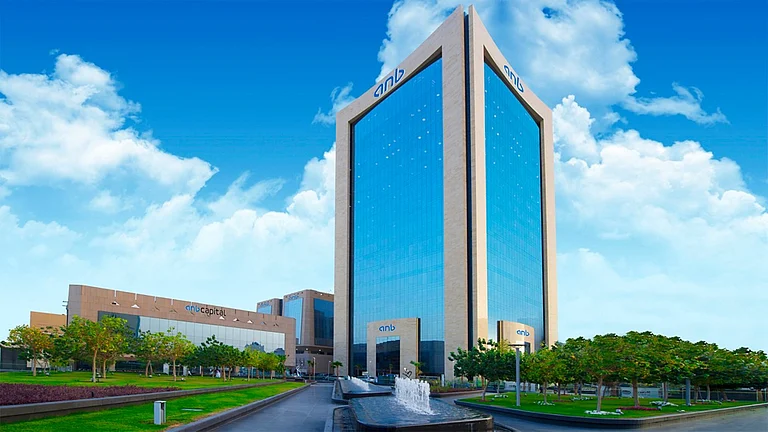In 1991, Mukul Anand’s Hum had Tiger (Amitabh Bachchan) swinging from chains asking Jumma (Kimi Katkar) for a kiss on a Friday. Jumma chumma de de, went the ditty. For reasons best known to the Indian public, that overt solicitation became wildly popular. In 1996, Tata Tea hit the airwaves with a tamer version — with Javed Jaffrey asking Anu Aggarwal for taazgi (freshness) which sets her off dancing through tea gardens and the factory floor, in a bouncy red dress.
That cheap imitation marked the company’s first serious attempt to create a brand in the consumer space, to hedge against the volatile commodities’ side. Since then, it has made remarkable progress. Now known as Tata Global Beverages, it is today the market leader in the country, besides being the second largest private producer in the world. Its flagship product, Tata Tea Premium, is one of the largest tea brands in India, and the company rules over the southern states with Chakra Gold, Gemini and Kanan Devan.
This May, the company stepped up its consumption play by announcing a merger with Tata Chemicals’ consumer arm that sells salt, spices, pulses, snacks and nutri-supplements. It means, Tata Global Beverages could well transform into an FMCG giant. Meanwhile, Tata Chemicals will continue life as a chemical pure play, with focus on basic and specialty chemical segments.

The group has been historically successful in this direction and analysts are already drooling over the projections of the combined entity’s financials, though the merger will take nine to 12 months to complete. Taking into account the financial results of FY19 (See: Powerful mix), the new Tata Global Beverages, which will be called Tata Consumer Products once merged, will have revenue and Ebitda of Rs.90 billion and Rs.11.5 billion respectively. Currently, the company’s topline and Ebitda stand at Rs.72.5 billion and Rs.8.3 billion respectively.
Post the announcement in May 2019, the stock hit a 52-week high of Rs.277 in July. And despite the sharp appreciation, analysts believe there is room for further upside. “We believe it deserves a market cap of more than Rs.200 billion due to strong balance sheet and brand recall. When Dabur and HUL can trade at such high valuation, a consumption name such as Tata Global deserves better,” says Sanjiv Bhasin, executive vice president, IIFL Securities.
That’s saying a lot, since muted economic growth and slowdown in consumption is making investors cautious about FMCG stocks. Investors believe that Tata Global Beverages’ existing business will benefit from the resultant synergy and enable it to tap into newer segments.
Balanced drink
The decision to merge comes from an unease that has set into the branded tea business. Lesser known labels such as Wagh Bakri, Amar Tea and Girnar are gaining market share, though in single-digit, while top players such as Tata and HUL are seeing sluggish growth. Unbranded players, preferred among several rural consumers, have 40-45% of the Rs.230 billion tea market. In its Q3FY19 analyst meet, the management admitted that the tea market is saturated and the conversion from unbranded to branded is happening at a slow pace.
The second challenge that the industry faces is the product’s semi-commodity nature and rising labour wages. Although they own plantations, the players need to source tea to meet consumer demand and prices for the leaves have been shooting up. In fact, it rose from Rs.1,651 crore in FY18 to Rs.1,829 crore in FY19 — the highest in five years. “In FY19, North India tea (largest proportion in Tata Global Beverages’ tea buying portfolio in India) prices increased from Rs.140 per kg to Rs.147.6 per kg (annual average) i.e. ~5.4% against FY18,” according to the company. These factors have eaten into profitability and exerted pressure on margin. Over the past five years, the company’s Ebitda margin has grown at an average of 10.87%. “Margin has stagnated around 10%, which is not very high for a consumer product company,” says Sanjay Manyal, equity research analyst, ICICI Securities.
Even the company’s international businesses have been disheartening. Two of its key markets and the source of 41% revenue, the United States and United Kingdom are seeing declining growth in the tea market. Eight O’Clock Coffee, the company’s acquisition in the US, is also under pressure due to intense competition. Tata Global Beverages began exiting some of its international investments in January 2017, when it sold its stake in Chinese joint venture Zhejiang Tata Tea. It also shut shop in Russia after selling its two subsidiaries — Sunty and Teatrade — in the same year. Analysts believe that the beverage-maker will also divest its entities in the Czech Republic and Poland. In September 2018, the company’s overseas operations were merged into a single entity — International Business Division.
In the midst of all this, the humble salt could reverse fortunes. Tata Chemicals’ consumer arm has a higher Ebitda margin of 16% than Tata Global Beverages’ 10%, largely thanks to Tata Salt. It holds the lead position in the branded salt market with 65% market share, which helps it generate higher volume and better margin. “So, the blended margin will expand,” says Manyal. According to the company’s investor presentation, the combined entity would have an Ebitda margin of 12.7% in FY19 compared to Tata Global Beverages’ 11.6%.
The merger would also result in cost rationalisation in packaging and marketing, and a stronger distribution network, which should lead to margin expansion by 100-150 basis points. The combined entity will have 2.5 million retail outlets and 5,000 stockists with a reach of 200 million households. “Tata Global Beverages is strong in the southern and eastern markets, while Tata Salt is a dominant player in western India. The stronger distribution in one segment can be leveraged to enhance the positioning of the othersegment, in each of these markets,” notes an IIFL Institutional Equities report.

India first
When Tetley was bought by Tata Tea in 2000, it was considered an audacious entry by the Indian company into the global market.(See: Changing focus). Since then, the overseas business has done well, contributing 51% to Tata Global’s revenue. But now, there is a sharp reversal in sight with this share dropping to 39% post the merger. “The overseas businesses always have additional risk factors like geopolitical and currency risks. So, the company may be focusing more on India as it helps them to avoid global volatility and the potential to grow is enormous,” says Vivek Lohumi, equity advisor, Karvy Group. The current merger will aid the management’s ambition of evolving into a broader FMCG player in India. “With tea, coffee, water, and now with salt, spices, staples and packaged food products, it gives us a very large addressable market. This will help us grow substantially,” says a company spokesperson. While tea will continue to contribute significantly to revenue, its share will come down to around 57% from 71%.
The new-and-improved FMCG player also has Tata Sampann, which is the company’s spices, pulses and ready-to-cook portfolio. With better branding, this vertical can contribute significantly to net profit. “Customers are looking for branded products even in the non-discretionary space and the company has sensed an opportunity there. People know that Tata is a big brand in salt space and this position can be leveraged in other segments,” says Bhasin of IIFL Securities. There’s merit in his comment since Tata Sampann is a rapidly growing brand with substantial reach.
The pulses market has a dismal representation of branded players, at only 1%. Only Future Consumer has a serious presence in this category with its brand Golden Harvest. Banking on this need gap, Tata Chemicals noted in its FY19 annual report, “The industry is largely unbranded and there is a need for high quality, hygienically packed products. This presents a significant business opportunity.”
The Tata Global Beverages spokesperson adds, “The Tata group pioneered the shift from unbranded to branded category successfully in tea and salt. We see similar opportunities in staples and packaged food.”
The company will also increase its presence in liquid beverages through Gluco Plus and Tata Fruski, and take a call on scaling up after analysing the growth in these pilot projects.
Following the trend prevalent in the sector, Tata Global Beverages is working to increase tea consumption through premiumisation while expanding into newer segments. The company is refining high-end offerings such as Tata Tea Gold, pricing it higher after a re-launch with new packaging. Nilesh Shetty, associate fund manager — equity, Quantum AMC, says, “The focus will remain on premium products to improve margins.”
To glamourise tea, or to lift the profile of the beverage, Tata Global has also been opening cafés. Tata Cha, serving in Bengaluru since October 2017, is expanding its presence through the current six outlets. This series of chai cafés comes on the back of a successful joint venture with Starbucks, which registered topline growth of 30% to Rs.4.5 billion in FY19 and has set up 146 stores till date.
The premiumisation strategy also helps in better penetration in overseas businesses as tea and coffee segments are much more organised in the US and Europe. “Customers there are more willing to pay a higher price for branded and healthy products. It can help to expand margins,” says Lohumi. During the Q3FY19 analyst call, Ajoy Kumar Misra, CEO and executive director of Tata Global Beverages had stated that the UK, Europe, Scandinavia and the US have matured enough to accept premium products. In FY19, the company launched two premium black tea brands in Portugal and two new signature labels in France.
Worthy bet
Even as the tea and salt segments are saturated, the combination of Tata Tea and Tata Salt, leaders in their respective sectors, makes Tata Global Beverages a strong consumption bet for investors. Analysts believe that growing urbanisation and increasing per capita income should help the market leaders leverage their positions. They state that the acquisition of Dhunseri’s branded tea business and the decision to become a full consumer firm shows Tata Global Beverages’ hunger to grow existing businesses and add new revenue frontiers.
“The management is continuously innovating through new products like tea cafés and adding more categories into the existing tea and water portfolios. This signals the possibility of healthy growth in multiple areas which will elevate the topline revenue,” says Lohumi.
With a strong balance sheet, Manyal says, the new entity can spend more on promotions for pulses and spices while investing heavily in new categories. “Their entry into new categories such as detergent and other FMCG products holds the key to growth,” adds Manyal.
All this sounds like music to the ears of investors, as evident in the stock rally. At its current price of Rs.256, the market leader in salt and tea trades at 23x FY21 estimated earnings. With the merger likely to be completed by the last quarter of FY20, the perfect blend could change the perspective about the stock, which has given a five-year CAGR return of 9%. Truly a Jaago Re moment!












 Just one email a week
Just one email a week